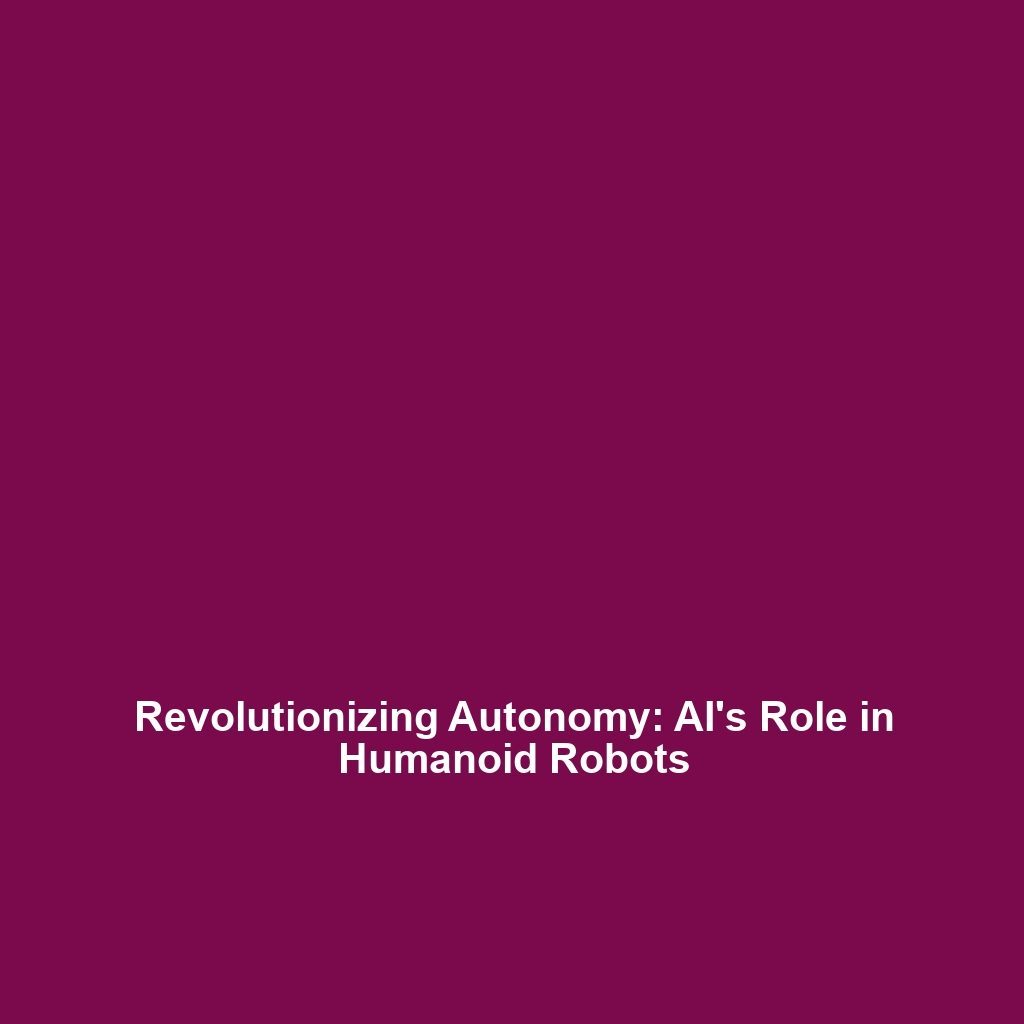Artificial Intelligence in Humanoid Robots: How AI Drives Autonomy
Artificial Intelligence (AI) is revolutionizing the capabilities of humanoid robots, providing them with a level of autonomy that was previously unattainable. The integration of AI allows these robots to perform complex tasks, interact with humans, and learn from their environments, making them invaluable assets in various fields. As we delve into the significance of AI in humanoid robots, it’s essential to understand the core principles that drive their autonomous functions and the broad implications they have on the future of robotics.
Key Concepts
Understanding how AI influences humanoid robots requires an exploration of several key concepts:
- Machine Learning: A subset of AI that enables robots to improve their performance over time based on experience.
- Natural Language Processing (NLP): This allows humanoid robots to understand and respond to human speech, enhancing interaction.
- Computer Vision: Essential for robot navigation and object recognition, helping robots perceive and analyze their surroundings.
These principles contribute significantly to how humanoid robots function autonomously in various environments, making AI a cornerstone of modern robotics.
Applications and Real-World Uses
The applications of Artificial Intelligence in humanoid robots are vast. Here are some significant examples:
- Healthcare: Humanoid robots equipped with AI assist in patient care, from performing routine tasks to providing companionship.
- Customer Service: AI-powered humanoid robots are used in retail settings to assist customers, manage inventory, and enhance shopping experiences.
- Education: These robots serve as interactive tutors, providing personalized learning experiences for students.
Each of these uses showcases how AI enhances the functionality of humanoid robots, driving autonomy and improving efficiency.
Current Challenges
Despite significant advances, there are challenges in applying AI within humanoid robots:
- Ethical Concerns: Addressing the moral implications of AI decisions and humanoid robot behavior.
- Technical Limitations: Overcoming constraints in processing power and data availability for real-time learning.
- Public Acceptance: Building trust in humanoid robots and their capabilities among users.
These challenges highlight the complexity of integrating AI into humanoid robotics and underscore the need for ongoing research and development.
Future Research and Innovations
Looking ahead, several innovations are poised to transform the role of AI in humanoid robots:
- Enhanced Learning Algorithms: New algorithms that allow robots to learn and adapt more rapidly in changing environments.
- Improved Human-Robot Interaction: Advances in NLP and emotion recognition to make interactions more seamless and intuitive.
- Collaboration with IoT: Integrating humanoid robots with the Internet of Things (IoT) for smarter operational environments.
These future developments could redefine the landscape of humanoid robotics, pushing the boundaries of what these machines can achieve.
Conclusion
Artificial Intelligence is undeniably shaping the future of humanoid robots, enhancing their autonomy and expanding their capabilities. As we continue to address the challenges and embrace future innovations, the potential for humanoid robots in society becomes increasingly promising. For more information on how AI can transform other sectors, check out our articles on AI in Healthcare and Robotics in Education.
